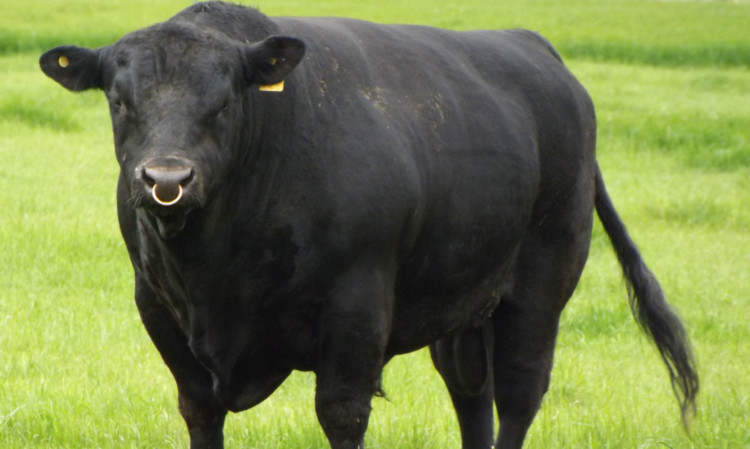The East of Scotland Grassland Society (ESGS) was on tour in the Forfar area recently and took the chance to see two very different types of Aberdeen-Angus pedigree cattle.
Alistair Fraser and son Graham at Newton of Idvies, Letham, are in the mainstream producing bulls and heifers for sale to pedigree and commercial producers.
Meanwhile, just five miles away at Kingston Farm, Kingsmuir, husband and wife Geordie and Julia Soutar have carved out a successful niche breeding a very traditional type of Aberdeen-Angus, using bloodlines thought to have been long lost.
The Frasers farm 560 acres over four units on an arable rotation, with 90 acres of grass including 17 acres cut twice as silage and made into rotacut bales.
The 65-strong Aberdeen-Angus herd is all spring calving and has Hi-Health status.
Only stock bulls are purchased, with the herd otherwise being closed.
Home-bred heifers are retained as replacements or sold to other breeders.
Around 20 selected bulls are sold each year, either privately or through United Auctions at Stirling.
Surplus bulls are finished for sale to Scotbeef at Bridge of Allan or ABP at Perth.
Alistair and Graham have never shied away from buying the best stock bulls they can find.
The 28,000 gns Jeremy Eric of Bridgefoot made his mark on the herd, and more recently the £32,000 privately purchased Rawburn Rommell.
The Idvies herd also has a half share of the 24,000 gns Lockerley Legoglas.
The ESGS members were able to view the latest acquisition, the 21,000 gns Shadwell Black Broughton, running with a group of younger cows.
In terms of sales and show successes the Frasers’ most recent highlight was seeing new owner Bill Bruce, of the Logie herd at Ellon, collecting the supreme breed championship at last year’s Royal Highland Show.
This animal, the 10,000 gns Idvies Kollar, was also voted as Angus breeder best of the breed in Europe last year.
There is no doubt the Aberdeen-Angus herd at Newton of Idvies is the key enterprise but there has also been room for diversification, with a new 100kW wind turbine erected last year and already producing at least the predicted output.
Geordie and Julia Soutar have built up a very different herd on their 135-acre farm at Kingston. Geordie sold up his successful grain-trading business in Forfar with the aim of devoting more time to his Dunlouise herd, which had been founded in 1995.
The herd, named after his children Duncan and Louise, was to be based on the already rare traditional lines.
These cattle, being smaller and thicker, had fallen out of favour, but Geordie was convinced that they had traits worth preserving including the ability to thrive on grass only, and strong maternal instincts. These traditional cows also have a shorter gestation period than is now considered normal, leading to easier calvings and longer-living cows.
It took 12 years of diligent searching and trawling through herd books to find members of all nine traditional lines still in existence.
Had he waited much longer, most of them would have been extinct.
Since the herd was finally assembled in 2007, there have been no purchases, with the Soutars concentrating on fixing the genetics, often using line breeding.
The herd now numbers 50 cows, 40 of which are of the traditional or “pure native” type, and 10 of which are registered Aberdeen-Angus used as embryo recipients.
Geordie told the visitors that the aged stock bull Dunlouise Jipsey Earl E161 was a good example of the traditional type.
The Jipsey family is one of the oldest in the breed, originating in 1862 thanks to the breeding work of Arch Whyte at Spott, Glen Prosen.
The founding father of the line, Old Jip, would no doubt have been proud to know that his descendant Jipsey Earl is currently rated in the top 1% for producing daughters with exceptional milk yield by the American Angus Association.
Considering he was being compared with 23,448 sires, that is quite a feat.
